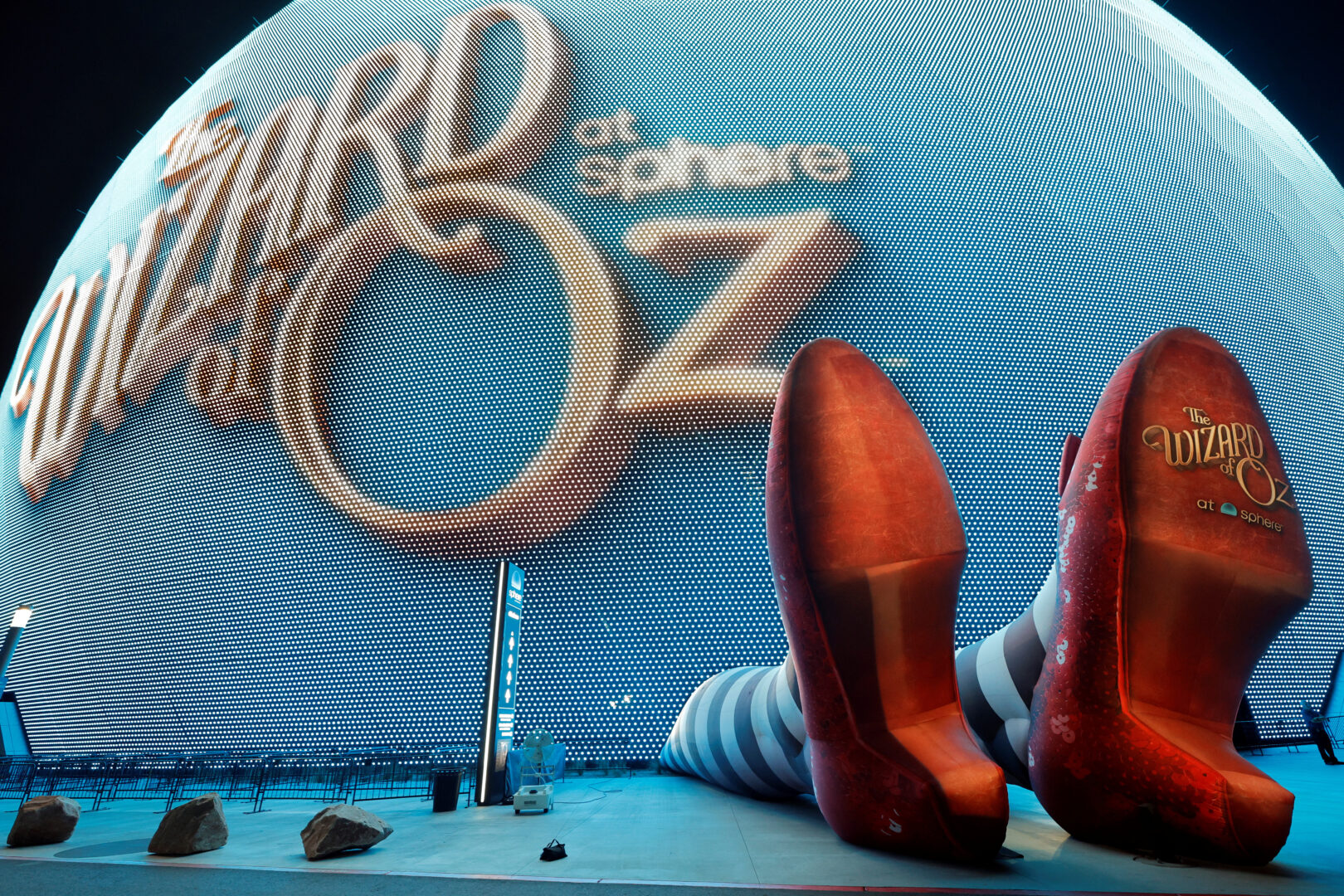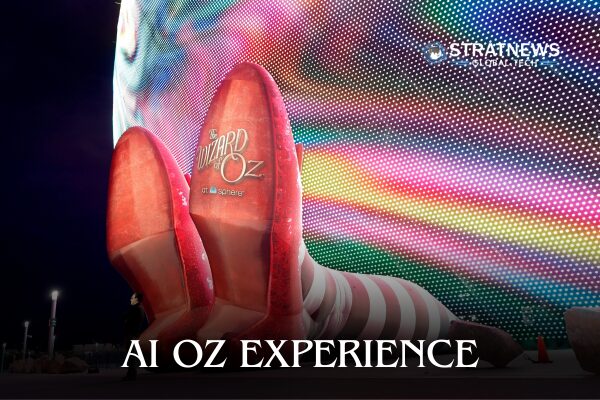“The Wizard of Oz” Transformed with AI at Las Vegas Sphere
When “The Wizard of Oz at Sphere” opens on 28 August in Las Vegas, audiences will step inside a cinematic world unlike anything created in 1939. The experience surrounds viewers with the film’s iconic scenes on a 160,000-square-foot LED wall, 22 stories high, while wind machines, flying props, and other effects bring the story to life.
Tickets, starting at $104, offer much more than a simple screening. The project marks one of Hollywood’s most ambitious uses of artificial intelligence to enhance a classic film, merging original performances with state-of-the-art technology.
Thao Nguyen, an immersive arts agent at CAA, called it “a meaningful milestone in AI-human creative collaboration,” predicting it will reshape how studios revisit cultural icons.

Two Years, 2,000 Creatives, and AI Innovation
The production took two years and the collaboration of more than 2,000 professionals, including Warner Bros Discovery executives, Google DeepMind researchers, academics, and visual effects specialists. It began in 2023 as Sphere executives sought a film worthy of the venue’s massive technological canvas.
Warner Bros CEO David Zaslav approved the idea, with strict rules ensuring AI respected the original material. Google’s models were trained on archival “Oz” footage and actor likenesses, but the studio retained ownership of all data. None of it was fed into Google’s public AI systems.
Initially, the team tried traditional CGI but abandoned it to preserve authenticity. Instead, AI tools restored and enhanced the original 1939 film, elevating its resolution tenfold. Details like Dorothy’s freckles or the burlap texture on the Scarecrow were revealed for the first time.
Preserving Integrity While Expanding the Vision
AI also filled missing visual gaps, such as completing scenes cut off by original camera framing. One example involved extending a shot of the Tin Man breaking into the Witch’s castle, producing a seamless, wider perspective for the Sphere’s gigantic display.
To complement the visuals, musicians re-recorded the full score on the original MGM soundstage. Judy Garland’s vocals and those of the cast remain untouched, preserving the heart of the classic while reimagining its presentation.
Despite careful attention to authenticity, some critics argue the adaptation alters an untouchable masterpiece. Producer Jane Rosenthal countered that detractors have not yet seen the final result.
A New Era of Cinema-Experiential Fusion
Audience immersion extends beyond the screen. The tornado sequence surrounds viewers with wind and debris, while drone-guided helium monkeys sweep overhead during the Wicked Witch’s scenes. In the Emerald City, a towering 200-foot Wizard dominates the hall, achieving an effect impossible in 1939.
Oscar-winning visual effects supervisor Ben Grossmann stressed that changes were made only to deepen the viewer’s connection to Dorothy’s journey. “Whenever we made a change, it was because we wanted the audience to experience what Dorothy was experiencing directly,” he explained.
The final product combines cinema, live production, and VR-style immersion. “This is going to change how people think about entertainment,” Grossmann said.
with inputs from Reuters


